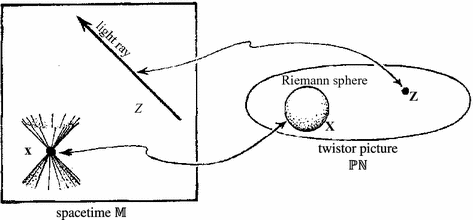An interesting paper appeared on the arXiv yesterday, by Hermann Nicolai and Kasper Peeters, entitled Loop and spin foam quantum gravity: a brief guide for beginners. It includes some of the same material as an earlier paper Loop quantum gravity: an outside view that they wrote with Marija Zamaklar.
Nicolai and Peters (as well as Zamaklar) are string theorists, and given the extremely heated controversy of the last few years between the LQG and string theory communities over who has the most promising approach to quantum gravity, one wonders how even-handed their discussion is likely to be. They identify various technical problems with the different approaches to finding a non-perturbative theory of quantum gravity that are often referred to as “LQG”. I’m not an all an expert in this subject, so I have no idea whether they have got these right, and whether the problems they identify are as serious as they seem to claim. Their main point, which they make repeatedly, is that
.. the need to fix infinitely many couplings in the perturbative approach, and the appearance of infinitely many ambiguities in non-perturbative approaches are really just different sides of the same coin. In other words, non-perturbative approaches, even if they do not `see’ any UV divergences, cannot be relieved of the duty to explain in detail how the above divergences `disappear’, be it through cancellations or some other mechanism.
What they are claiming seems to be that LQG still has not dealt with the problems raised by the non-renormalizability of quantum GR. They don’t explicitly make the claim that string theory has dealt with these problems, but the structure of their argument is such as to imply that this is the case, or that at least string theory is a more promising way of doing so. Their one explicit reference to string theory doesn’t really inspire confidence in me that they are being even-handed:
The abundance of `consistent’ Hamiltonians and spin foam models … is sometimes compared to the vacuum degeneracy problem of string theory, but the latter concerns different solutions of the same theory, as there is no dispute as to what (perturbative) string theory is. However, the concomitant lack of predictivity is obviously a problem for both approaches.
While they are being very hard on LQG for difficulties coming from not being able to show that certain specific constructions have certain specific properties, they are happy to state as incontrovertible fact something about string theory which is not exactly mathematically rigorous (the formulation of string theory requires picking a background, causing problems with the idea that all backgrounds come from the “same” theory, and let’s not even get into the problems at more than two loops).
The article is listed as a contribution to “An assessment of current paradigms in theoretical physics”, and I’m curious what that is. Does it contain an equally tough-minded evaluation of the problems of string theory?
It should be emphasized again that I’m no expert on this. I’m curious to hear from experts what they think of this article. Well-informed comments about this are welcome, anti-string or anti-LQG rants will be deleted.
Update:
There’s a new expository article about spin-foams by Perez out this evening.


